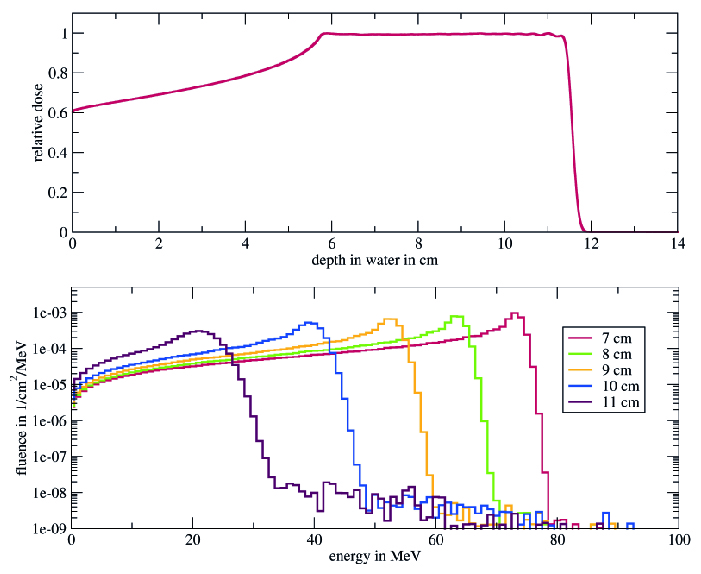Monte Carlo calculated kQ factors for ionization chambers in modulated proton beams
Kilian-Simon Baumann,
Germany
MO-0676
Abstract
Monte Carlo calculated kQ factors for ionization chambers in modulated proton beams
Authors: Kilian-Simon Baumann1,2,4, Larissa Derksen2, Veronika Flatten3,2, Matthias Witt2,4, Rita Engenhart-Cabillic3,4, Klemens Zink4,2
1University Hospital Gießen-Marburg, Department of Radiotherapy and Radiooncology, Marburg, Germany; 2University of Applied Sciences, Institute of Medical Physics and Radiation Protection, Giessen, Germany; 3University Medical Center Giessen-Marburg, Department of Radiotherapy and Radiooncology, Marburg, Germany; 4Marburg Ion-Beam Therapy Center, MIT, Marburg, Germany
Show Affiliations
Hide Affiliations
Purpose or Objective
Currently, the IAEA TRS-398 Code of Practice (CoP) is being updated. The updated version will provide beam quality correction factors (kQ) for air-filled ionization chambers in mono-energetic as well as modulated proton beams.
In this study, we used the Monte Carlo code TOPAS/Geant4 to calculate kQ factors for air-filled ionization chambers at different depths in a proton spread-out Bragg Peak (SOBP) and compare the results with the values presented in the upcoming IAEA TRS-398 CoP.
Material and Methods
A SOBP was simulated in water with an extension in depth between 6 cm and 11.5 cm. kQ factors for six plane-parallel and four cylindrical air-filled ionization chambers were calculated whereas the chambers were positioned at depths between 7 cm and 11 cm. Additionally, the spectral fluences of protons at these depths were determined in order to investigate the depth-dependent energy spectrum of protons.
Results
In Figure 1, the depth dose distribution of the SOBP is shown in the top panel. In the bottom panel, the spectral fluences of protons at various depths in the SOBP are shown. The average energy of protons decreases with an increasing depth in water whereas the peak of the fluence of primary protons broadens.
In Figure 2, Monte Carlo calculated kQ factors for an exemplary cylindrical ionization chamber as a function of the residual range are shown along with the values from the upcoming TRS-398 CoP. Monte Carlo calculated kQ factors are larger by up to ~2.5%. Additionally, Monte Carlo calculated kQ factors show a more pronounced dependence on the residual range with an increase of 1.7% for small residual ranges whereas the kQ factors from the upcoming TRS-398 CoP increase by only 0.4%. For residual ranges above 1.5 g cm-2, Monte Carlo calculated kQ factors agree within one standard uncertainty with the values from the upcoming TRS-398 CoP.
Conclusion
Monte Carlo calculated kQ factors in proton SOBP show a general good agreement with the values from the upcoming TRS-398 CoP for residual ranges above 1.5 g cm-2. For smaller residual ranges, Monte Carlo calculated kQ factors show a more pronounced dependence on residual range which might result from the broader spectrum and lower average energy of protons.
The increase of kQ factors for small residual ranges might lead to an underestimation of the dose determined with ionization chambers at the distal end of a SOBP.

Figure 1: Top panel: proton SOBP simulated with TOPAS/Geant4. Bottom panel: spectral fluence of protons determined at difference depths in the proton SOBP.

Figure 2: kQ factors calculated with TOPAS/Geant4 as a function of residual range in water. The error bars depict one standard uncertainty. In solid line the corresponding values from the upcoming TRS-398 CoP. The dashed lines represent one standard uncertainty.